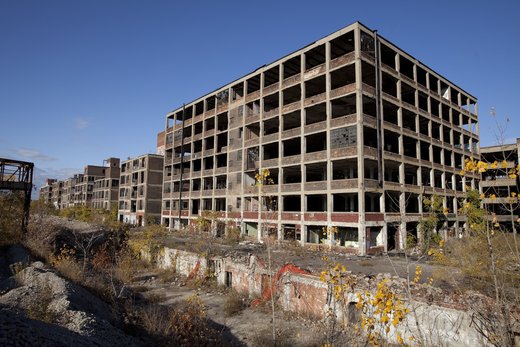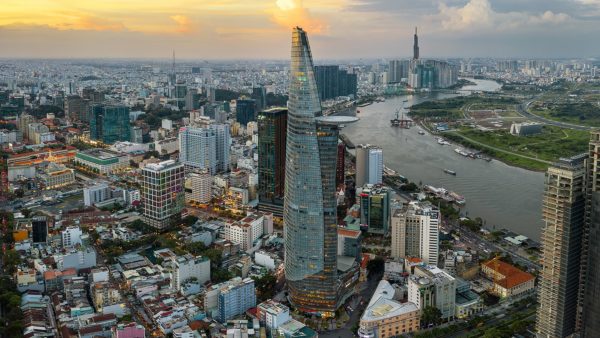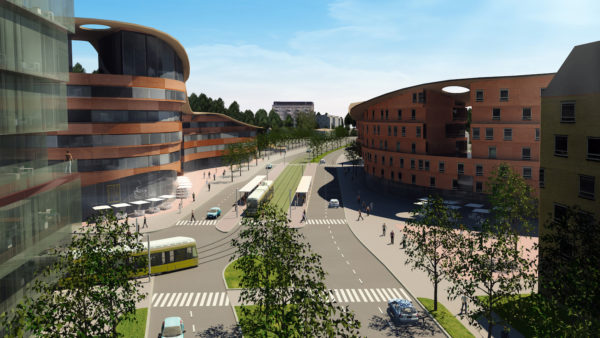18 December 2013
The birthplace of modern mass production is pioneering a strange new future for America’s declining cities, David Rogers reports.
Back in July of this year, the American city of Detroit filed for bankruptcy protection with debts of about $18 billion. Â
The news was not unexpected. Back in the fifties, Motor City had a population of 1.8 million and was the centre of a huge complex of factories making parts for the assembly lines of Ford, General Motors and Chrysler. Â
Now its population is only 700,000, and it has all but ground to a halt. Only a third of its ambulances work – a serious matter given that the city’s murder rate is the highest in the US.
All the same, it was reported around the world. Most stories mentioned the 100,000 creditors who were being offered 10 cents on the dollar, and quoted the pledge of Rick Snyder, the governor of Michigan, that public sector workers would continue to be paid.
In China, however, the main item of interest was that it was possible to buy a two-storey house in the city for $39, or, as posters on China’s version of Twitter expressed it, the price of a pair of shoes.
The interest in China was triggered by what has happened to its domestic property market in recent years. Â
House prices in some cities are rising at 20% a year and by the standard price to wage measure, are now the most unaffordable in the world.
The price of an apartment in Beijing is 25 times the average annual wage. Â
So even though Detroit is broke and dangerous and has almost no prospects for recovery in the new future, it has become the fourth most popular US destination for China’s property investors. Â
In September, the Dongdu International Group bought at auction the Detroit Free Press building. This 28,000 m2, 14-storey art deco icon, designed by Albert Kahn in the twenties, cost the Shanghai company $9.4 million.
It also  picked up a 37-storey skyscraper known as the David Stott building, for just $4.2 million. Â
The Chinese, who are planning to redevelop the buildings as residential and retail complexes, were reported to be "astounded" by what they’d got for their money.
Other Chinese purchasers picking up hundreds of "inexpensive properties"- those selling for less than $25,000 – in the districts around the city centre. The expectation is that if Detroit does experience life after death, this will be the area most likely to appreciate in value. Â
However, this is unlikely by itself to help Detroit because much of the Chinese money is being spent on buying land with no immediate plans to develop it.
And many of those Chinese buyers who manage to get visas and come to America to inspect their investment are surprised by what they find. Â
Caroline Chen, an estate agent in the nearby town of Troy, told the Quartz website that she is often called by purchasers who say, "Hey, I’m at the airport." Â
Because she is unwilling to risk her safety for a $3 commission on a home sale, she recommends that they hire a taxi to drive them through the areas with dirt-cheap houses.

Part of the abandoned Packard Automotive Plant in Detroit, Michigan. (Albert duce/Wikimedia Commons)
So far, most haven’t called her back. "Once they see the scary area, they give up,"Â she said.
The new situation has created a surreal market for the construction industry, but it is one that it is likely to become more familiar. Â
Detroit is largest, but not the first US city to file for bankruptcy. Â
Last year three California cities – Stockton, Mammoth Lakes and San Bernardino – went bust, as did Harrisburg in Pennsylvania and Boise County in Idaho. Â
What’s more, many cities across the Midwest are facing the same problems of deindustrialisation: Buffalo, Cleveland, and Pittsburgh have each lost more than 40% of their populations over the past four decades as manufacturing and heavy engineering have moved to low wage economies.
It used to be called the Rust Belt, but the Bust Belt may now be more apt.
Essentially, the problem such cities face is one of deconstruction: that is, to remove and recycle the buildings and the infrastructure that 10 generations of construction workers laboured to erect. Â
The aim is to put a floor under the property market by removing blighted properties, then to exploit what remain of the city’s heritage: that is, its "astoundingly cheap" architectural icons and the knowledge stored in its universities, to attract more high-tech industry. Â
The strategic plan for Detroit is to replace urban blight with agriculture: already it has become the centre of the urban farm movement, and a company called Hantz Farms is buying up land with the eventual aim of turning convicts and recovering addicts into farmers. Â
The next step could be to exploit the city’s knowledge of automotive technology by designing the next generation of electric cars.
Reed Kroloff, the dean of architecture at Tulane University, argues that the rust belt cities have resources they can exploit.
He says that Pittsburgh may be able to recover from the loss of its steel industry by exploiting research undertaken at Carnegie Mellon University and the University of Pittsburgh, while Cleveland could base a biotech industry on the joint institutions of the Cleveland Clinic and Case Western University.
If this vision ever becomes reality – and all commentators agree that it is not going to happen quickly – it is going to make a lot of Chinese people very happy.










